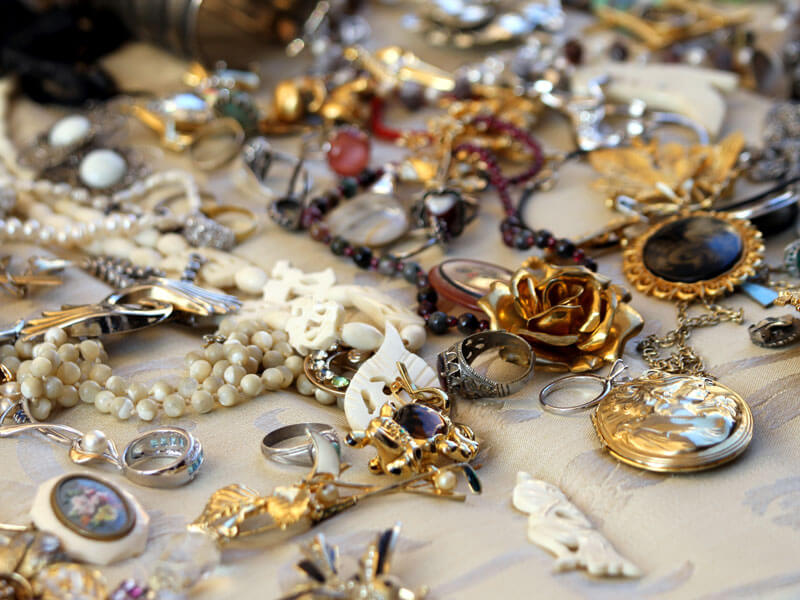How to tell if your Vintage Jewellery Pieces are Worth a Fortune
 Supposedly, there is around £60million worth of unidentified vintage jewellery pieces lying around homes inBritain. Earlier this year a ring bought at a boot fair for £10 went on to fetch over £650k at auction!
Supposedly, there is around £60million worth of unidentified vintage jewellery pieces lying around homes inBritain. Earlier this year a ring bought at a boot fair for £10 went on to fetch over £650k at auction!
Vintage jewellery prices have continuously risen over the years as investors have moved away from stocks and shares and instead invested in collectable pieces, diamonds and gemstones.
We’ve put together several steps you can take to identify high-value items of vintage jewellery.
Research
Gathering together as much information as possible about the jewellery item and where it came from can help to give you an idea of its worth. The sort of thing you should keep an eye out for includes original receipts, fitted cases and anything that gives an idea of when and where the item was purchased.
Branded jewellery is almost definitely going to have value, so look for jewellery houses like Cartier and Tiffany’s.
Hallmarks
Give the jewellery piece a thorough check to see if it is marked. Is there a signature on the back or a hallmark? These could indicate the city, date and metal content of the jewellery.
Whatever the mark, it’s important to get it looked at by a professional, even if it’s not something you are familiar with. For example, if there is an eagle head mark it could mean it was manufactured inFrance, suggesting that the piece is of high quality and worth.
Stones and Gems
Does the jewellery in question feature any stones or gems? Colourless gems could be diamonds; modern cuts are precise, but older cuts can appear slightly asymmetrical. Coloured gems like rubies, sapphires and emeralds have increased in value recently, so it’s vital to keep an eye out for these.
Antique gems are likely to be untreated, which makes them more valuable. They also tend to be found in premier mines, which are no longer around, meaning they are extremely rare and in high demand.
Pearls are another gemstone that you should look out for. Natural pearls are formed over many years, as opposed to cultured pearls that are formed by man in a farm. Natural pearls are hugely valuable when compared to cultured pearls, and the only way to be certain of the type of pearl is to use an X-Ray or visit a jewellery specialist.
Here at Cuttings, we carry a beautiful stock of antique jewellery including Victorian, Edwardian and Art Deco pieces. If you’ve got a jewellery piece you’d like valued, we can help.
For more information, get in touch with the Cuttings team by visiting our contact page or by visiting at our Ramsgate orMargate store.




